The Lenovo ThinkStation P900 Workstation Review: Design 101
by Ian Cutress on May 6, 2015 7:00 AM ESTOffice Performance
Video Conversion – Handbrake v0.9.9: link
Handbrake is a media conversion tool that was initially designed to help DVD ISOs and Video CDs into more common video formats. The principle today is still the same, primarily as an output for H.264 + AAC/MP3 audio within an MKV container. In our test we use the same videos as in the Xilisoft test, and results are given in frames per second.
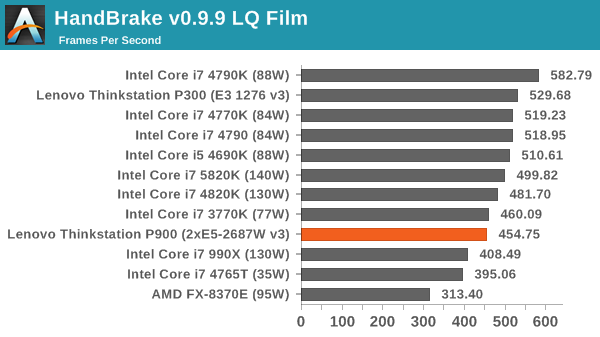
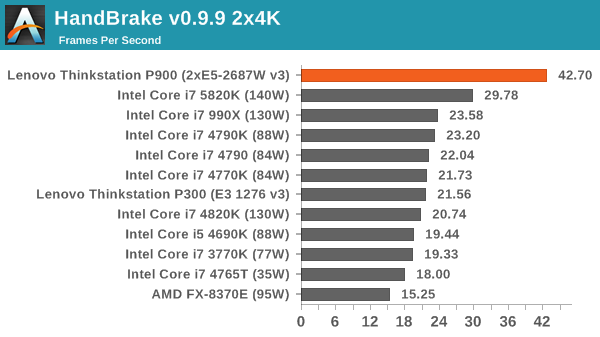
The single thread frequency on a high core-count processor is usually lower than a similar TDP low-core count one, and as a result the low quality conversion performance is down on a good Haswell quad core. On the other hand, moving to double UHD sized frames allows the P900 to stretch its legs. Performance isn't exactly 3x the 5820K here based on core count, but it does take an extra chunk of performance.
Point Calculations – 3D Movement Algorithm Test: link
3DPM is a self-penned benchmark, taking basic 3D movement algorithms used in Brownian Motion simulations and testing them for speed. High floating point performance, MHz and IPC wins in the single thread version, whereas the multithread version has to handle the threads and loves more cores.
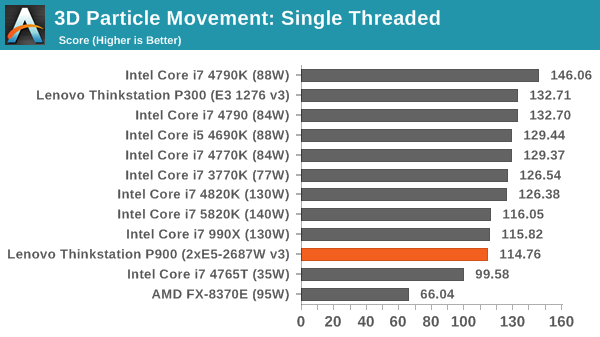
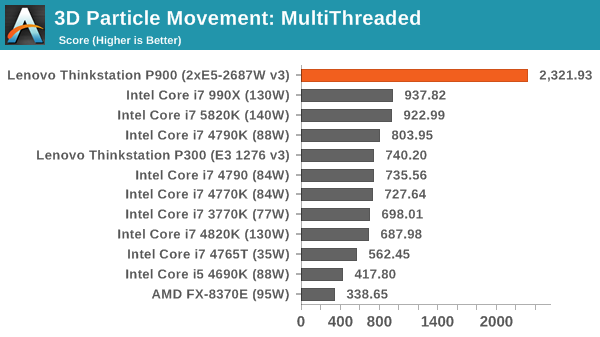
Similar results to HandBrake here, but the multi-threaded version of the benchmark is memory independent, allowing the 20 cores / 40 threads to stretch its legs.
Compression – WinRAR 5.0.1: link
Our WinRAR test from 2013 is updated to the latest version of WinRAR at the start of 2014. We compress a set of 2867 files across 320 folders totaling 1.52 GB in size – 95% of these files are small typical website files, and the rest (90% of the size) are small 30 second 720p videos.
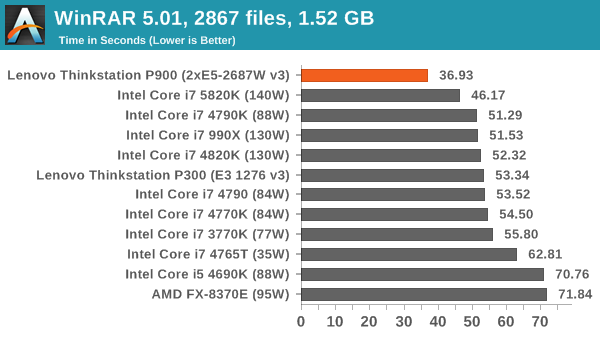
Despite the semi-threaded nature of WinRAR, having 40 threads helps in compression here.
Image Manipulation – FastStone Image Viewer 4.9: link
Similarly to WinRAR, the FastStone test us updated for 2014 to the latest version. FastStone is the program I use to perform quick or bulk actions on images, such as resizing, adjusting for color and cropping. In our test we take a series of 170 images in various sizes and formats and convert them all into 640x480 .gif files, maintaining the aspect ratio. FastStone does not use multithreading for this test, and thus single threaded performance is often the winner.
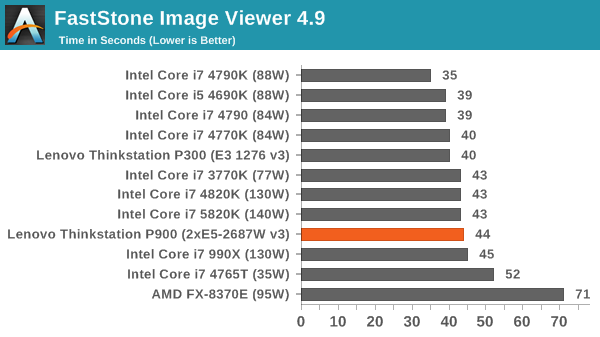
FastStone relies on single thread performance, so we see it further down the charts.
Rendering – PovRay 3.7: link
The Persistence of Vision RayTracer, or PovRay, is a freeware package for as the name suggests, ray tracing. It is a pure renderer, rather than modeling software, but the latest beta version contains a handy benchmark for stressing all processing threads on a platform. We have been using this test in motherboard reviews to test memory stability at various CPU speeds to good effect – if it passes the test, the IMC in the CPU is stable for a given CPU speed. As a CPU test, it runs for approximately 2-3 minutes on high end platforms.
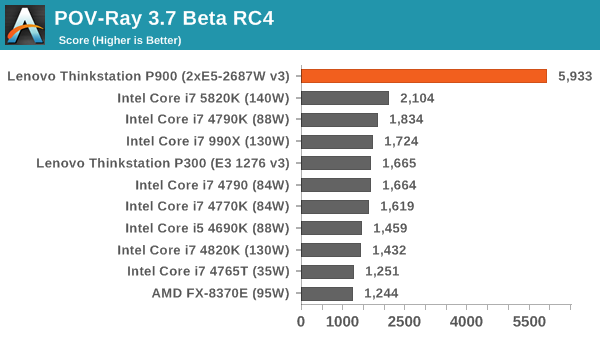
POV-Ray is also heavily multithreaded, allowing any big cores to push through.










61 Comments
View All Comments
ectoplasmosis - Wednesday, May 6, 2015 - link
Yes, the photos in most articles have been atrocious for a while now.It's not expensive or difficult to get a lightbox and learn how to use a DSLR...
xype - Wednesday, May 6, 2015 - link
I see a seasonic ad that goes right up to the to the article’s text edge. It makes it really, really hard to read. Great design, there.Samus - Wednesday, May 6, 2015 - link
Review system at $16,797.60That gave me a chuckle ;)
Flunk - Wednesday, May 6, 2015 - link
Workstation or loaded Hyundai Accent, which is better value?ImSteevin - Thursday, May 14, 2015 - link
Like with any tool, it depends what you need to do!DanNeely - Wednesday, May 6, 2015 - link
I'm a bit curious about part of the PSU design. From the label on the PSU itself, and the ODD/HDD power connectors on the mobo diagram, it's appears that during normal use the 3.3/5v power is being made using DC-DC converters on the mobo. (I suppose they could be dual purposing the +5Vsb unit in the PSU for part of that, but would've expected it to be marked differently if so.) I'm wondering why they left the -12v module in the PSU instead of moving it to the mobo (next to the RS232 port) as well. Are circuits that can invert DC power significantly more expensive/less efficient than something that could be done while closer to the AC?aggiechase37 - Thursday, May 7, 2015 - link
Does it come pre-loaded with spyware like their lappies? Also, whatever their excuse for the price: vom. I can build this system myself for a tenth of the price.zodiacfml - Friday, May 8, 2015 - link
Design 101? They should have taken a page from Apple's Mac Pro. As an engineer, I love that design despite an Apple hater. It doesn't have to be cylindrical externally or as compact but to be efficient in design.dragonsqrrl - Saturday, May 9, 2015 - link
This workstation seems woefully overpriced for the specs. A similarly spec'd Dell Precision costs ~$10,500.akula2 - Sunday, May 10, 2015 - link
The recent X99 based workstations I've built are far more superior in terms of low TDP. performance and savings. E.g.,E5-2680 v3: 12 Cores -- 120W -- 30Mb cache. -- costs much less.
Considering the investment for each workstation, the most important point missed:
How safe is the data in this machine when running Windows 7 or 8? Highly unlikely.
Hence, I chose Linux because of various reasons. E.g., PRNG issue, thanks to Intel's 'RdRand' CPU instruction.